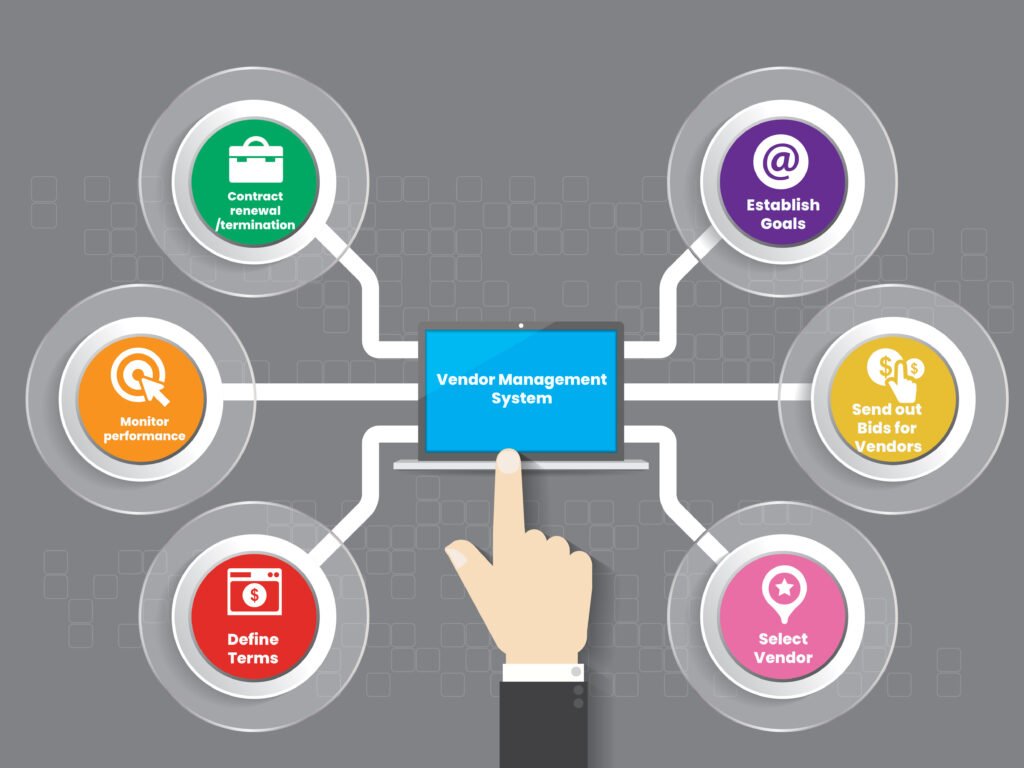Vendor Management Systems
So let’s start with the fundamentals before delving into the specifics of a vendor management systems, its features, and its advantages.
What is a vendor management system?
A vendor management system, or VMS, is cloud-based software that gives businesses a centralised platform to keep all supplier data while also assisting in managing and collaborating with their vendors. It offers resources for bringing on new suppliers, keeping track of their progress, and guaranteeing compliance.
Why is a vendor management system (VMS) necessary?
Utilising the right vendor management system enables you to maximise your supplier connection. Vendor management is essential to the success of any procurement team. A cloud-based vendor management system like eSmart Procurement Cloud has a tonne of advantages, from supplier qualification to onboarding to enabling them to establish & manage catalogues to track supplier performance.
The following are some additional benefits of having a vendor management system:
- Successful vendor relationship management initiatives allow for the most efficient use of personnel and financial resources.
- Delivery of goods and services on schedule
- As you consistently provide results, customer connections also improve.
- The end-to-end processes involved benefit from consistency and efficiency thanks to the vendor management system.
- KPIs and customised reports can be used to evaluate vendor performance. None of this required manual labour.
- For maximum productivity, the purchase process should be optimised.

eSmart Procurement Cloud’s features for vendor management systems
Here are the vendor management features that a solution like eSmart Procurement Cloud may provide for you.
Self-service for suppliers
Suppliers and you both have the ability to independently manage their catalogues and other information.
Supplier authorization
Request registration information from suppliers without requiring them to log into ESmart Procurement Cloud.
Vendor onboarding
Recruit suppliers and provide them with comprehensive information, including remittance information, payment and shipping terms, certificates, financials, and more.
Supplier rating
Rate your vendors based on a range of criteria, including product quality, on-time delivery, and more.
Avoid duplications
A smart master data hygiene practice is to refrain from onboarding the same provider more than once.
Supply chain classification
Utilising pre-populated UNSPSC standards, assign suppliers to one or more categories.
Effective measures
Configure detailed settings for things like invoice limitations, supplier user access constraints, 3 or 2-way matching types, PO communication modes, and more.
Why would you pick a comprehensive vendor management system over a stand-alone one?
While a stand-alone vendor management system is efficient in all supplier-related matters, it largely lacks integration with the broader procurement process and works in isolation. Due to this, choosing a complete source-to-pay procurement software like eSmart Procurement Cloud is always the better course of action.
The following are some advantages of using a procure-to-pay system like eSmart:
- Better management of vendor relationships
- A centralised system for contracts, payments for invoices, billing data, and all other procurement processes
- One platform to evaluate, manage, and track vendor performance
- Transparent requisition, approval, and purchase order processes
- Improved spending transparency and compliance management
- Seamless interaction with the company’s other tools
- Records are accessible for audit trails.
- The capacity to choose vendors in an educated manner
An end-to-end procurement platform like eSmart Procurement Cloud takes things up a step by bridging the gap between multiple procurement operations and streamlining purchasing as a whole. While a standalone vendor management tool is fine, it falls short of an end-to-end platform. If you’re still unsure, ask for an eSmart Procurement Cloud demo to discover how well it can meet the vendor management requirements of your procurement team.
